-
 Bitcoin
Bitcoin $107,680.4588
-0.98% -
 Ethereum
Ethereum $2,524.8906
-0.38% -
 Tether USDt
Tether USDt $1.0003
0.00% -
 XRP
XRP $2.3085
-1.38% -
 BNB
BNB $667.1259
-0.60% -
 Solana
Solana $172.0597
-2.84% -
 USDC
USDC $0.9999
0.01% -
 Dogecoin
Dogecoin $0.2196
-2.99% -
 Cardano
Cardano $0.7463
-0.34% -
 TRON
TRON $0.2710
0.11% -
 Hyperliquid
Hyperliquid $38.1513
7.56% -
 Sui
Sui $3.5299
-2.42% -
 Chainlink
Chainlink $15.1052
-1.72% -
 Avalanche
Avalanche $22.4835
-1.92% -
 Stellar
Stellar $0.2833
-1.14% -
 Shiba Inu
Shiba Inu $0.0...01411
-1.90% -
 UNUS SED LEO
UNUS SED LEO $8.8866
0.94% -
 Bitcoin Cash
Bitcoin Cash $412.0371
-2.96% -
 Hedera
Hedera $0.1846
-2.70% -
 Monero
Monero $415.1787
2.92% -
 Toncoin
Toncoin $2.9646
-2.32% -
 Litecoin
Litecoin $94.0837
-2.23% -
 Polkadot
Polkadot $4.4182
-3.18% -
 Bitget Token
Bitget Token $5.3218
-5.11% -
 Pi
Pi $0.7759
-0.76% -
 Pepe
Pepe $0.0...01310
-5.23% -
 Dai
Dai $0.9998
-0.01% -
 Ethena USDe
Ethena USDe $1.0006
0.00% -
 Aave
Aave $263.4213
0.13% -
 Uniswap
Uniswap $6.0244
-2.20%
Is the MACD indicator suitable for short-term or long-term trading? How to optimize the usage method in different cycles?
The MACD indicator is versatile for crypto trading, effective in short-term and long-term strategies, with settings adjustable to optimize performance across different market cycles.
May 25, 2025 at 10:56 pm
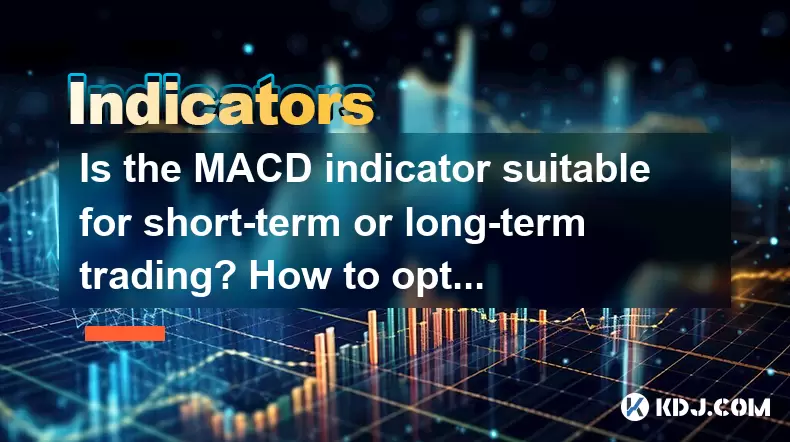
The Moving Average Convergence Divergence (MACD) indicator is a versatile tool used by traders in the cryptocurrency market to identify potential buy and sell signals. The question of whether the MACD is suitable for short-term or long-term trading, and how to optimize its usage in different cycles, is a crucial one for traders looking to maximize their effectiveness. This article will delve into the specifics of the MACD indicator, its application in various trading timeframes, and provide detailed guidance on optimizing its use.
Understanding the MACD Indicator
The MACD indicator is composed of two lines: the MACD line and the signal line, along with a histogram that represents the difference between these two lines. The MACD line is calculated by subtracting the 26-period Exponential Moving Average (EMA) from the 12-period EMA. The signal line is a 9-period EMA of the MACD line. The interaction between these lines and the histogram provides traders with insights into market momentum and potential trend reversals.
MACD for Short-Term Trading
In the context of short-term trading, the MACD can be particularly useful for identifying quick entry and exit points. Short-term traders, often looking at timeframes ranging from a few minutes to a few hours, need to be able to react swiftly to market changes. The MACD's sensitivity to price movements makes it an ideal tool for this purpose.
- Identify Crossovers: For short-term trading, pay close attention to when the MACD line crosses above or below the signal line. A bullish crossover (MACD line crossing above the signal line) can signal a potential buying opportunity, while a bearish crossover (MACD line crossing below the signal line) can indicate a selling point.
- Monitor the Histogram: The histogram's size and direction can also provide insights into the strength of the current trend. A growing histogram suggests increasing momentum, which can be a signal to enter a trade.
- Adjust Settings: For even more sensitivity, short-term traders might consider adjusting the MACD settings to shorter periods, such as using a 5-10-4 configuration (5-period EMA, 10-period EMA, and 4-period signal line) to capture rapid market movements.
MACD for Long-Term Trading
For long-term trading, where the focus is on trends that last days, weeks, or even months, the standard MACD settings (12-26-9) are often more appropriate. Long-term traders aim to capture larger market movements and are less concerned with short-term fluctuations.
- Focus on Major Crossovers: Long-term traders should prioritize significant crossovers that occur after prolonged periods of divergence between the MACD and signal lines. These crossovers can indicate the beginning or end of a major trend.
- Divergence Analysis: Pay attention to divergences between the MACD and price action. A bullish divergence (price making lower lows while the MACD makes higher lows) can signal a potential reversal to the upside, while a bearish divergence (price making higher highs while the MACD makes lower highs) can indicate a potential downtrend.
- Trend Confirmation: Use the MACD to confirm the direction of the trend. A consistently positive MACD value can confirm an uptrend, while a consistently negative value can confirm a downtrend.
Optimizing MACD Usage Across Different Cycles
To optimize the MACD for different trading cycles, traders need to adjust their approach based on the timeframe they are focusing on. Here are some strategies to consider:
- Customize Settings: Depending on the trading cycle, adjust the MACD settings to match the timeframe. Shorter timeframes might benefit from more sensitive settings, while longer timeframes might require less frequent signals.
- Combine with Other Indicators: Use the MACD in conjunction with other technical indicators, such as the Relative Strength Index (RSI) or Bollinger Bands, to confirm signals and reduce false positives. For example, a bullish MACD crossover combined with an RSI reading above 50 can provide a stronger buy signal.
- Backtesting: Before applying any changes to live trading, backtest different MACD settings and strategies on historical data to see which configurations perform best for your specific trading cycle.
Using MACD in Different Market Conditions
The MACD can be effective in various market conditions, but its performance may vary depending on whether the market is trending or ranging.
- Trending Markets: In a trending market, the MACD is particularly useful for identifying the continuation or reversal of trends. Traders can use the MACD to enter trades in the direction of the trend and exit when signs of a reversal appear.
- Ranging Markets: In a ranging market, the MACD might produce more false signals due to the lack of clear trends. Traders can mitigate this by using the MACD to identify overbought and oversold conditions within the range and adjust their trading strategy accordingly.
Practical Application of MACD in Cryptocurrency Trading
To illustrate how to apply the MACD in cryptocurrency trading, let's consider a practical example using Bitcoin (BTC).
- Short-Term Trading Example: Suppose you are trading BTC on a 15-minute chart. You notice a bullish crossover of the MACD line above the signal line, and the histogram starts to expand. This could be a signal to enter a long position. You would then monitor the trade, looking for a bearish crossover or a significant decrease in the histogram to exit the trade.
- Long-Term Trading Example: If you are trading BTC on a daily chart, you might observe a prolonged period of bearish divergence between the price and the MACD. A subsequent bullish crossover could signal a potential reversal, prompting you to enter a long position. You would hold this position until a bearish crossover or a significant bearish divergence appears.
Frequently Asked Questions
Q1: Can the MACD be used effectively in highly volatile cryptocurrency markets?
A1: Yes, the MACD can be effective in volatile markets, but traders should be cautious of false signals. Combining the MACD with other indicators and adjusting settings to match the volatility can help improve its reliability.
Q2: How often should I adjust the MACD settings based on market conditions?
A2: It depends on your trading style and the market's volatility. Short-term traders might need to adjust settings more frequently to capture rapid movements, while long-term traders can use more stable settings but should still monitor market conditions and adjust as necessary.
Q3: Is the MACD more suitable for certain cryptocurrencies over others?
A3: The MACD can be used across all cryptocurrencies, but its effectiveness may vary based on the asset's volatility and trading volume. More liquid cryptocurrencies like Bitcoin and Ethereum might provide more reliable signals due to their higher trading volumes.
Q4: Can the MACD be used alone, or should it always be combined with other indicators?
A4: While the MACD can be used alone, combining it with other indicators can help confirm signals and reduce the risk of false positives. Using the MACD in conjunction with tools like the RSI or moving averages can provide a more comprehensive view of market conditions.
Disclaimer:info@kdj.com
The information provided is not trading advice. kdj.com does not assume any responsibility for any investments made based on the information provided in this article. Cryptocurrencies are highly volatile and it is highly recommended that you invest with caution after thorough research!
If you believe that the content used on this website infringes your copyright, please contact us immediately (info@kdj.com) and we will delete it promptly.
- Michael Saylor Signals Massive Bitcoin Purchase Again
- 2025-05-26 06:15:13
- Rare 2008 20p coin worth 300 times its value as people told to check their spare change
- 2025-05-26 06:15:13
- Pepeto Price Prediction, Big Potential. Best Crypto Presale to Buy Now
- 2025-05-26 06:10:12
- In the Rapidly Evolving Blockchain Landscape
- 2025-05-26 06:10:12
- Swiss luxury watchmaker Franck Muller launches a new limited-edition watch collection
- 2025-05-26 06:05:12
- APT Miner: A Cloud Mining Platform Promises 100% Uptime Guarantee
- 2025-05-26 06:05:12
Related knowledge
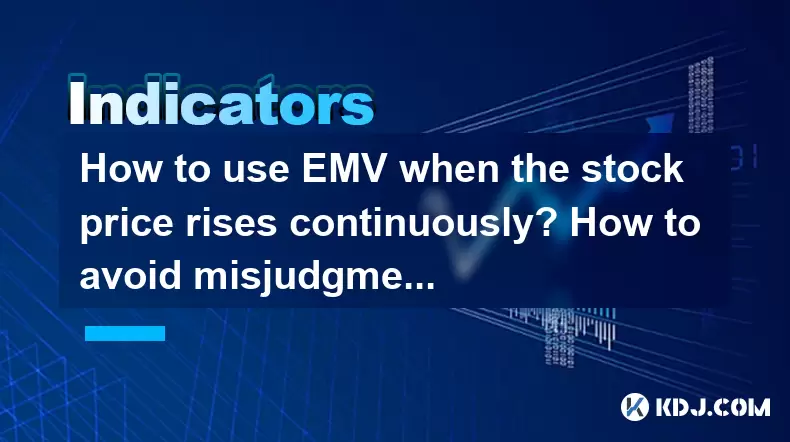
How to use EMV when the stock price rises continuously? How to avoid misjudgment in extreme market conditions?
May 23,2025 at 07:29pm
In the dynamic world of cryptocurrency trading, the Exponential Moving Average (EMA) is a powerful tool that traders use to make informed decisions, especially during periods of continuous stock price rises. Understanding how to effectively use EMAs and avoiding misjudgment in extreme market conditions are crucial skills for any crypto trader. This arti...
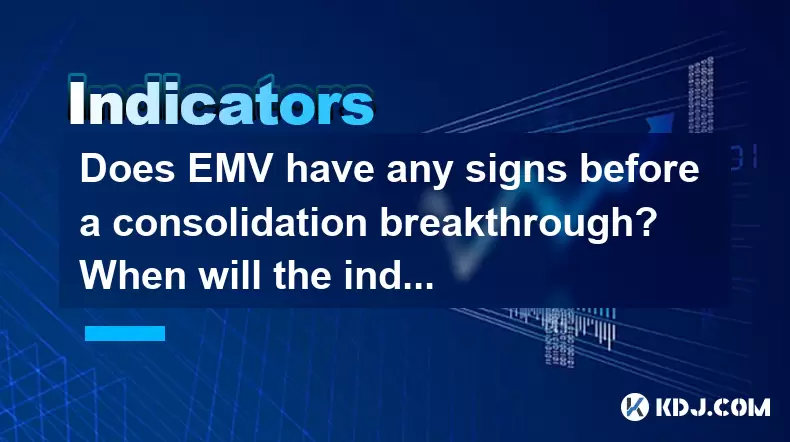
Does EMV have any signs before a consolidation breakthrough? When will the indicator give an early warning?
May 23,2025 at 06:42pm
Does EMV have any signs before a consolidation breakthrough? When will the indicator give an early warning? The Ease of Movement Value (EMV) is a technical indicator that helps traders understand the relationship between price and volume in the cryptocurrency market. It is particularly useful for identifying potential breakouts from consolidation period...
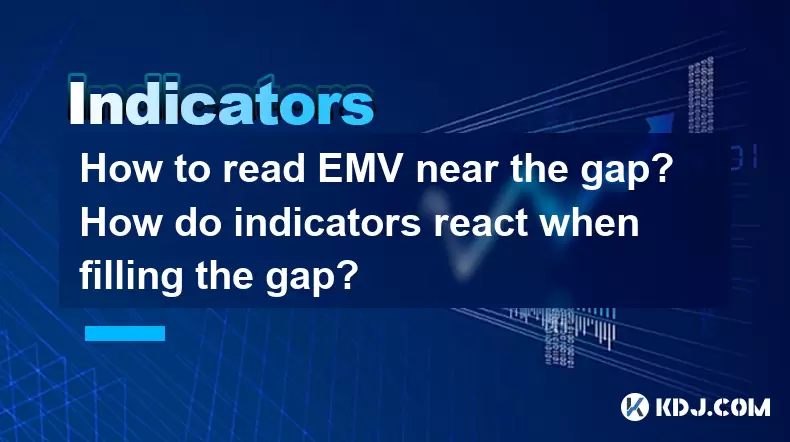
How to read EMV near the gap? How do indicators react when filling the gap?
May 25,2025 at 11:50pm
Understanding how to read EMV (Ease of Movement) near the gap and how indicators react when filling the gap is crucial for traders in the cryptocurrency market. This article will provide detailed insights into these concepts, helping you make more informed trading decisions. What is EMV and Why It Matters Near the GapEase of Movement (EMV) is a volume-b...
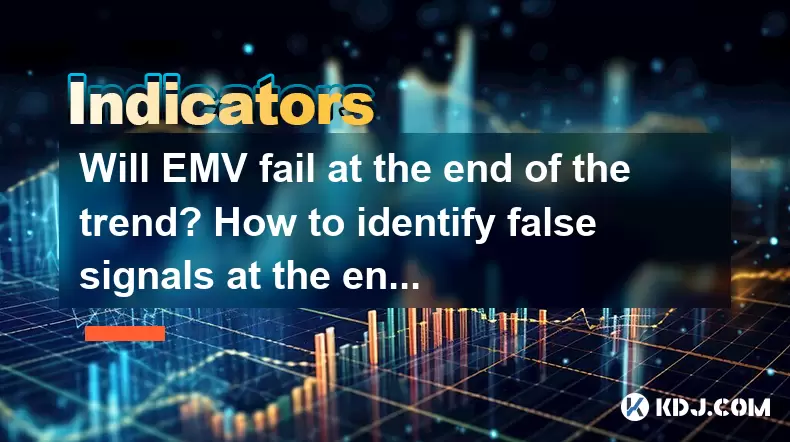
Will EMV fail at the end of the trend? How to identify false signals at the end of the market?
May 26,2025 at 12:57am
In the world of cryptocurrencies, the concept of Exponential Moving Average (EMV) plays a crucial role in technical analysis. Traders and investors use EMV to identify trends and potential reversals in the market. However, a common concern among crypto enthusiasts is whether EMV can fail at the end of a trend and how to identify false signals during the...
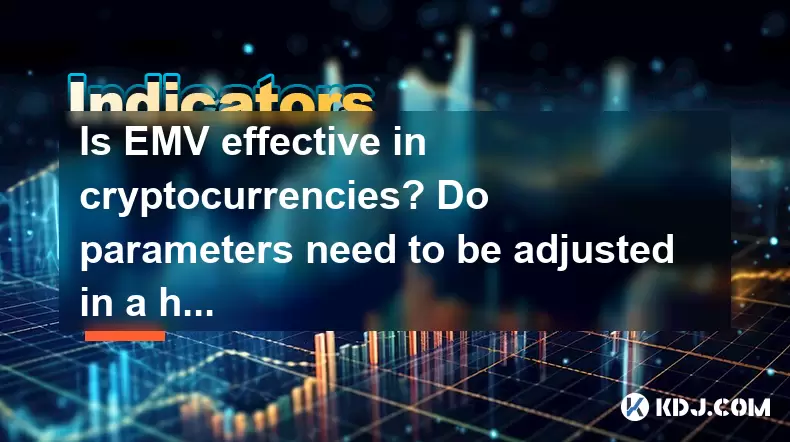
Is EMV effective in cryptocurrencies? Do parameters need to be adjusted in a high volatility environment?
May 24,2025 at 01:49am
Is EMV effective in cryptocurrencies? Do parameters need to be adjusted in a high volatility environment? EMV, or Ease of Movement Value, is a technical indicator that measures the relationship between price changes and volume. Originally developed for traditional financial markets, its application in the cryptocurrency space raises several questions ab...
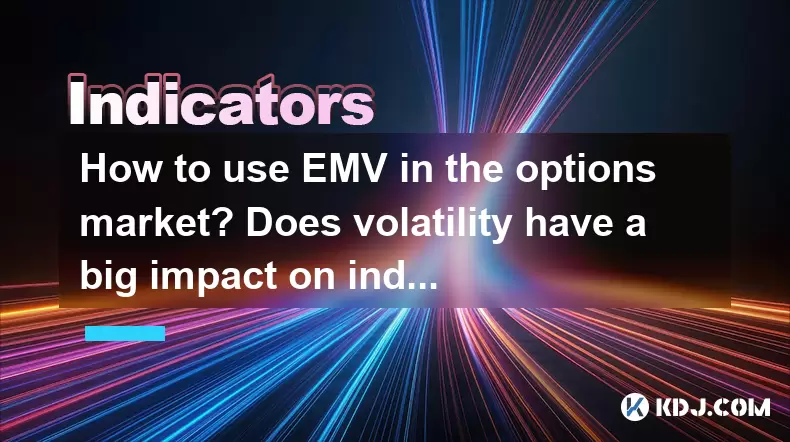
How to use EMV in the options market? Does volatility have a big impact on indicators?
May 24,2025 at 07:28am
How to Use EMV in the Options Market? Does Volatility Have a Big Impact on Indicators? The Ease of Movement Value (EMV) is a technical indicator that helps traders understand the relationship between price and volume, and it can be particularly useful in the options market. In this article, we will explore how to use EMV in the options market and examin...

How to use EMV when the stock price rises continuously? How to avoid misjudgment in extreme market conditions?
May 23,2025 at 07:29pm
In the dynamic world of cryptocurrency trading, the Exponential Moving Average (EMA) is a powerful tool that traders use to make informed decisions, especially during periods of continuous stock price rises. Understanding how to effectively use EMAs and avoiding misjudgment in extreme market conditions are crucial skills for any crypto trader. This arti...

Does EMV have any signs before a consolidation breakthrough? When will the indicator give an early warning?
May 23,2025 at 06:42pm
Does EMV have any signs before a consolidation breakthrough? When will the indicator give an early warning? The Ease of Movement Value (EMV) is a technical indicator that helps traders understand the relationship between price and volume in the cryptocurrency market. It is particularly useful for identifying potential breakouts from consolidation period...

How to read EMV near the gap? How do indicators react when filling the gap?
May 25,2025 at 11:50pm
Understanding how to read EMV (Ease of Movement) near the gap and how indicators react when filling the gap is crucial for traders in the cryptocurrency market. This article will provide detailed insights into these concepts, helping you make more informed trading decisions. What is EMV and Why It Matters Near the GapEase of Movement (EMV) is a volume-b...

Will EMV fail at the end of the trend? How to identify false signals at the end of the market?
May 26,2025 at 12:57am
In the world of cryptocurrencies, the concept of Exponential Moving Average (EMV) plays a crucial role in technical analysis. Traders and investors use EMV to identify trends and potential reversals in the market. However, a common concern among crypto enthusiasts is whether EMV can fail at the end of a trend and how to identify false signals during the...

Is EMV effective in cryptocurrencies? Do parameters need to be adjusted in a high volatility environment?
May 24,2025 at 01:49am
Is EMV effective in cryptocurrencies? Do parameters need to be adjusted in a high volatility environment? EMV, or Ease of Movement Value, is a technical indicator that measures the relationship between price changes and volume. Originally developed for traditional financial markets, its application in the cryptocurrency space raises several questions ab...

How to use EMV in the options market? Does volatility have a big impact on indicators?
May 24,2025 at 07:28am
How to Use EMV in the Options Market? Does Volatility Have a Big Impact on Indicators? The Ease of Movement Value (EMV) is a technical indicator that helps traders understand the relationship between price and volume, and it can be particularly useful in the options market. In this article, we will explore how to use EMV in the options market and examin...
See all articles























































































